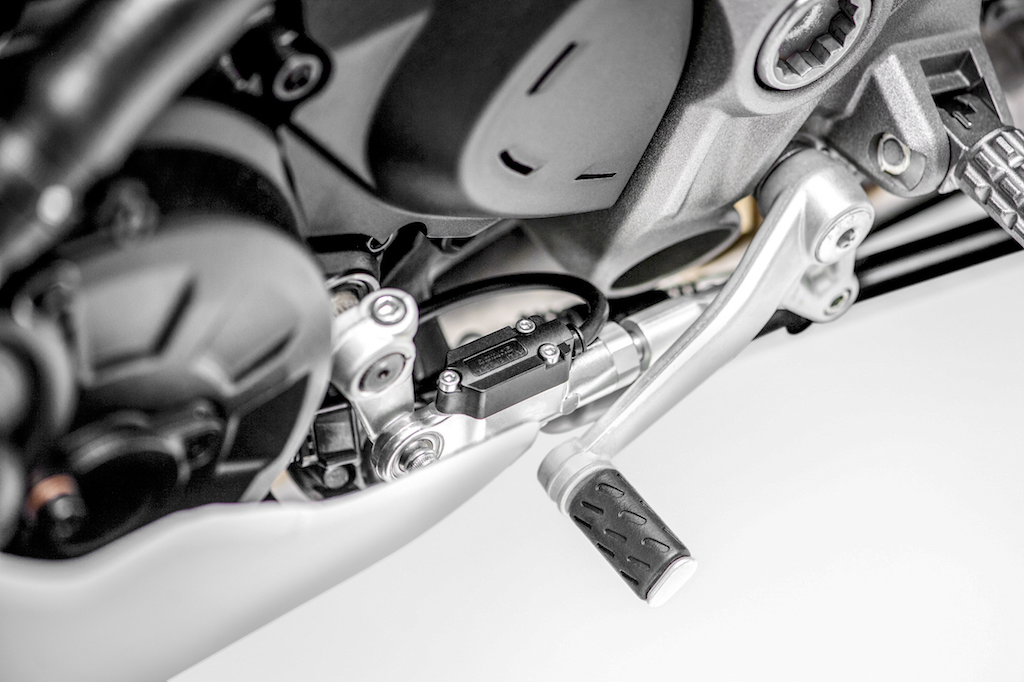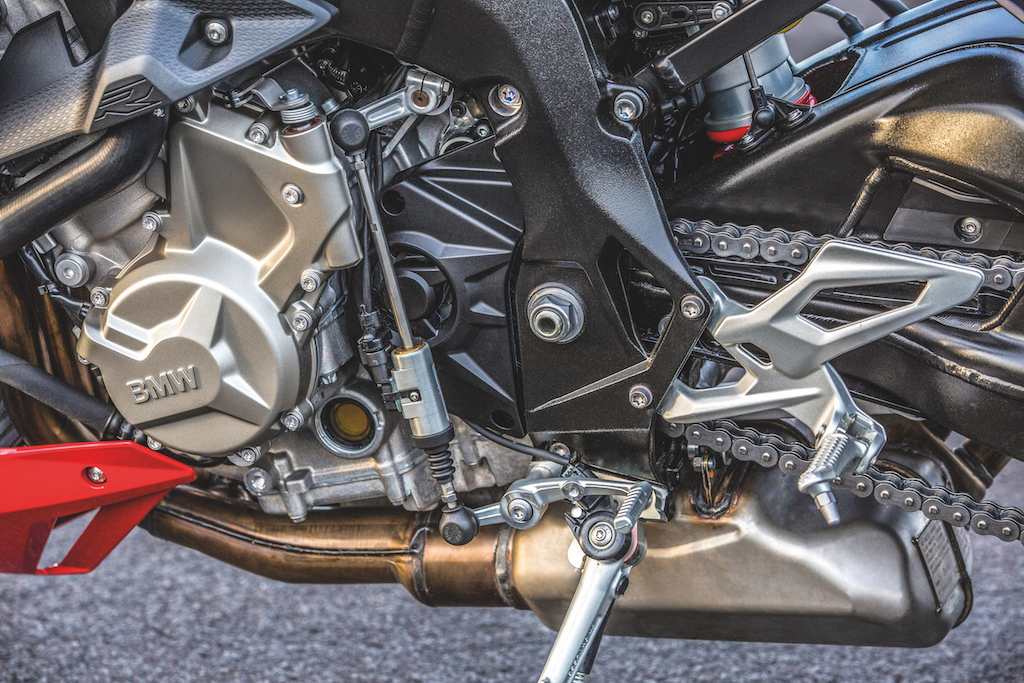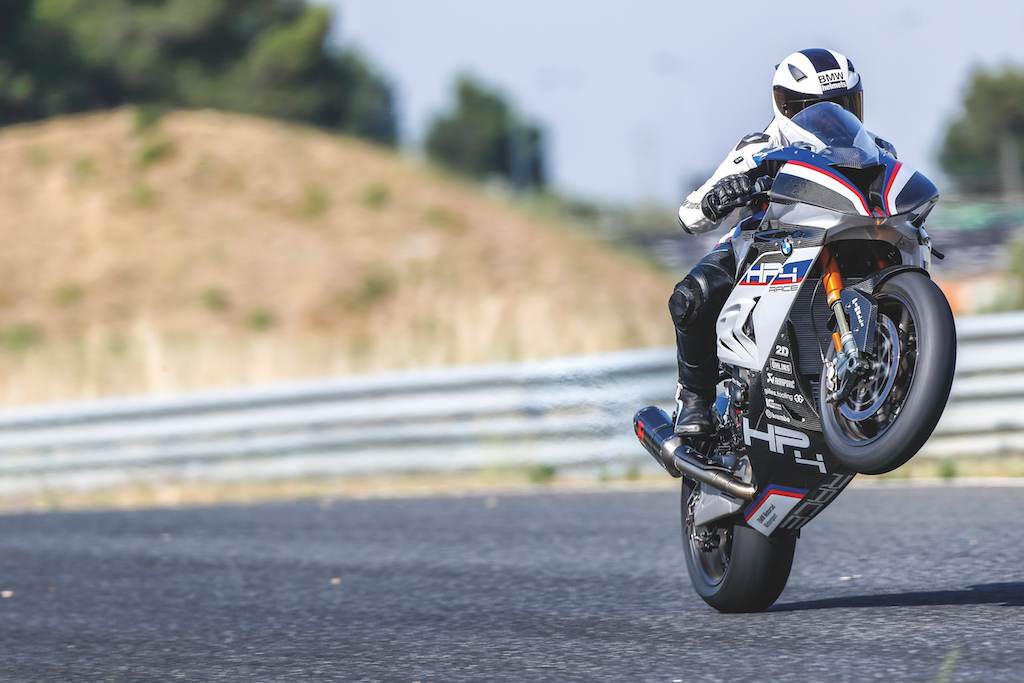The Ups and Downs of Quickshifters – Just how to they work?
You’ve definitely heard about them, and maybe your bike even has one, but do you really understand the witchcraft behind the quickshifter? We take a closer look…
As an avid reader of Bike Rider Magazine, you’ve probably come across the term ‘quick shifter’ and ‘auto blipper’ and thought, I know what that implies, but how exactly, do they both work, and what’s all the fuss about?
‘The fuss’ is that having a quick shifter as part of your bike’s standard equipment, allows you to shift gears – typically up – much more quickly than having just a conventional gearbox, without any loss of forward momentum, as your throttle remains open the whole time.
Put simply, the quick shifter does exactly what it says – and what you undoubtedly thought – it allows you to change up to the next gear considerably faster than it would be if you were to do the whole; roll off throttle, put foot under gear shift, suck in the clutch, haul up the gear lever, let go the clutch and wind on the throttle – OMG, it just sounds like a lifetime just reading it!
In more scientific terms: you could reasonably assume it takes 600 milliseconds for a competent rider to smoothly upshift, and that would include – between steps four and five — a throttle blip before re-engaging the clutch.
Allow more time if your competent rider is doing all that good stuff like being mindful of body position, analysing road factors, making on-the-go assessments of corners, wondering if that was a speed camera in that van, etcetera.
Oh, and don’t forget the hundredth of a second it takes for conscious thought – that is: ‘brain, tell hands and feet what to do. Hands and feet, do what brain says’.
Suddenly, the idea of a quick shifter able to perform a perfect upshift in its entirety in 50 milliseconds or less, sounds less like witchcraft and more like a ‘why don’t all bikes have these?’ proposition.
Mechanically speaking
 The basic premise of the quick shifter is to cut the ignition timing for the stupidly short space of time it’s going to take to snick that left lever up a smidge, thereby reducing the titanic force acting on the drive-chain.
The basic premise of the quick shifter is to cut the ignition timing for the stupidly short space of time it’s going to take to snick that left lever up a smidge, thereby reducing the titanic force acting on the drive-chain.
This micro-millisecond reduction in ignition allows the gears to slot into position smoothly and, because you haven’t closed the throttle remember, the drivetrain can give you the next level of acceleration without any energy loss.
But how does the quick shifter know when to cut ignition timing? Cue the David Bowie and Queen song, Under Pressure.
Typically, your average every day shift lever is replaced by a smarter one – the quick shifter – that has a mechanical sensor in it, connected to the bike’s ECU. The sensors could be positional – which informs the ECU that the lever position is changing and could it please kindly do that ignition cutting thing? Or a pressure sensor in the transmission itself, which sends the same polite message based on the pressure variance detected pre-shift when the rider’s toe slides under the lever in anticipation of going for the next gear up.
Wait, wait! I get all that, but my bike is from 1974 and doesn’t have an ECU. Can I not get a quick shifter then?
Relax, old timer, yes you will go to the ball…on ECU-less bikes, the quick shifter will link directly to the ignition coil and do pretty much the same thing, but it won’t affect the timing via ECU – ‘cos you don’t got one – but it will interrupt the coil’s electrical supply instead.
So WTF is an auto-blipper?
An auto-blipper improves the efficiency of your downshifting technique to increase the life expectancy of your drivetrain.
The act of ‘blipping’ the throttle as you downshift is something which some riders will have been taught to do at an early age, but there would be many riders who find it challenging or even a little unnatural.
Manual ‘blipping’ is however, a technique which can be learnt and will improve your riding experience while preserving the vital components of your transmission.
What you are effectively doing is matching the engine revs to the next gear down prior to actually downshifting, so that the strain on the drivetrain and its various parts, is reduced.
“Older dogs’ out there may not appreciate the learning of this new trick however, and if that is the case, there are a number of mechanical devices available which can auto-blip for you – it’s cheaper though, to master the art of blipping on a downshift manually.
Shifting back or back to shifting
 As to the question of why all bikes don’t have quick shifters then? Other than the most obvious answer of everyone should learn to drive a manual before they get into an auto – can I get a ‘hear, hear’ on that please – there is the consideration of cost from a manufacturer’s perspective, but also the slightly murkier reason; the fact that a quick shifter- especially an aftermarket one – has the potential to damage the transmission, as many have found to their expense.
As to the question of why all bikes don’t have quick shifters then? Other than the most obvious answer of everyone should learn to drive a manual before they get into an auto – can I get a ‘hear, hear’ on that please – there is the consideration of cost from a manufacturer’s perspective, but also the slightly murkier reason; the fact that a quick shifter- especially an aftermarket one – has the potential to damage the transmission, as many have found to their expense.
Effectively, you are using the gearbox without the requirement of using the clutch. Now the clutch on a regular road bike is a much-underrated device.
It’s amazing it works as well as it does, considering the forces it has to interrupt to do its job. I suspect, for most, the only time the clutch warrants a passing thought is when it doesn’t do what it’s supposed to.
And even when a clutch fails catastrophically, it is at the very least, saving you a whole gearbox.
Along comes the quick shifter, which basically bullies the clutch out of the picture.
On racing motorcycles, the bikes are pushed to the edges of the envelope for the most part and as anyone who’s ever opened a letter knows, the leading edge of an envelope is where the most damage occurs. In other words, a race bike is expected to have components replaced on a pretty regular basis – and transmissions are considered components.
Most commuter-type consumers would not be overly impressed with the idea of replacing a transmission on their 10,000km service, which could conceivably be the case if one was to ply the highways and byways, merely crashing the gears into each other with no thought for their longevity.
This is one reason why road bikes have clutches rather than quick shifters, that and the fact that having the ability to disconnect the drivetrain at will typically makes manoeuvring a motorcycle an easier proposition.
Yes, there are performance-oriented road bikes out there with quick shifters as OEM-spec, but check out the description of ‘performance-oriented’. These are not typically the “I’m just nipping down to the dairy’ bikes, unless home is Auckland and the dairy is, ooh, Napier?
Chances are the big Kawasakis, BMW’s, Yamaha’s, Ducati’s, Suzuki’s, Triumphs, Aprilias and others with quick shifters as factory standard, are going to be bought by the ‘every weekend, I’m at the track’ type riders, who appreciate the mechanical sophistication of having such gadgetry.
So, the short answer to the question of should I fit a quick shifter is: if you are planning on track days on a regular basis, yep, no reason why not, and your track times will likely improve.
But as with all elements of racing, you can pretty much expect to pay the piper at some stage, and it might be to the tune of a new transmission.
If your ride is a daily commuter, you probably aren’t going to get the benefits of a quick shifter at all – that you couldn’t get yourself with practice – so it’s probably worth spending your money on ooh, some rider training perhaps, which might teach you the very valuable art of optimal, manual gearshifting?













